Let's hear it for biocontrol.
You've seen lady beetles, aka ladybugs, preying on aphids.
But have you seen an assassin bug attack a spotted cucumber beetle?
No?
How about a crab spider munching on a stink bug?
All biocontrol, part of integrated pest management (IPM).
If you access the University of California Statewide Integrated Pest Management Program (UC IPM) website or more specifically, this page, you'll learn that "Integrated pest management, or IPM, is a process you can use to solve pest problems while minimizing risks to people and the environment. IPM can be used to manage all kinds of pests anywhere–in urban, agricultural, and wildland or natural areas."
Or, UC IPM's more in-depth definition:
"IPM is an ecosystem-based strategy that focuses on long-term prevention of pests or their damage through a combination of techniques such as biological control, habitat manipulation, modification of cultural practices, and use of resistant varieties. Pesticides are used only after monitoring indicates they are needed according to established guidelines, and treatments are made with the goal of removing only the target organism. Pest control materials are selected and applied in a manner that minimizes risks to human health, beneficial and nontarget organisms, and the environment."
Think of biocontrol as beneficial: "Biological control is the beneficial action of predators, parasites, pathogens, and competitors in controlling pests and their damage. Biological control provided by these living organisms (collectively called "natural enemies") is especially important for reducing the numbers of pest insects and mites, but biological control agents can also contribute to the control of weed, pathogen, nematode or vertebrate pests."--UC IPM
Yesterday we witnessed an incredible case of biocontrol in action.
At Bodega Bay's Doran Regional Park, Sonoma County, we spotted a great blue heron stepping stealthily through a thatch of ice plant in the Jetty campground. It was 6:30 in the morning. As campers slept in their recreational vehicles a few feet away, the great blue heron just kept stepping silently through the ice plant. One step. Another step. And another.
And then it happened. Its long sharp beak speared a rodent. Yes, they eat rodents. It crunched the body from head to toe, breaking the bones, and then swallowed it whole.
Not a pretty picture, but a simple case of biocontrol, compliments of a hungry heron.
Attached Images:
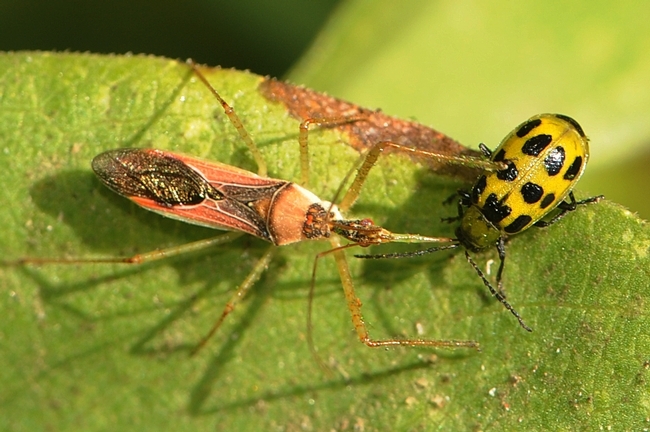
An assassin bug drills a pest, a spotted cucumber beetle. (Photo by Kathy Keatley Garvey)
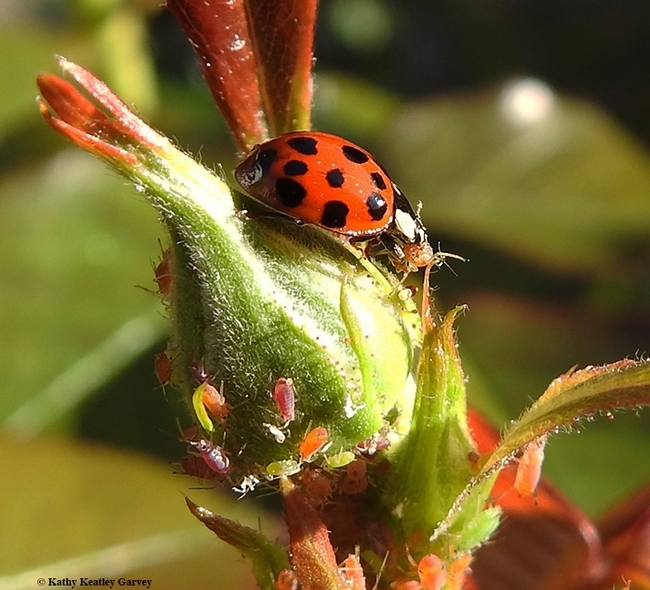
A lady beetle, aka ladybug, snares an aphid. (Photo by Kathy Keatley Garvey)
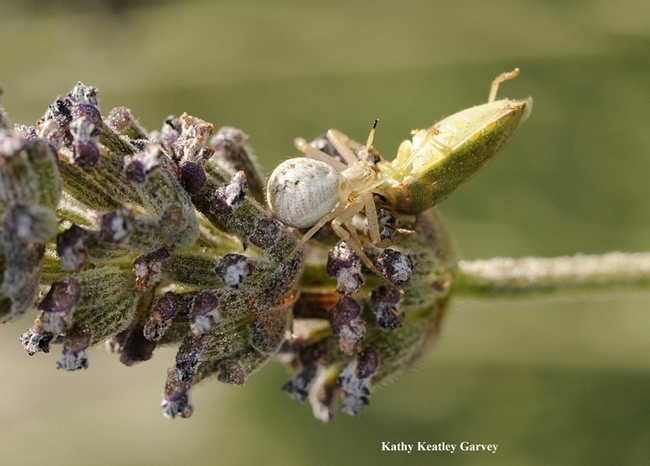
A crab spider munches on a stink bug. (Photo by Kathy Keatley Garvey)
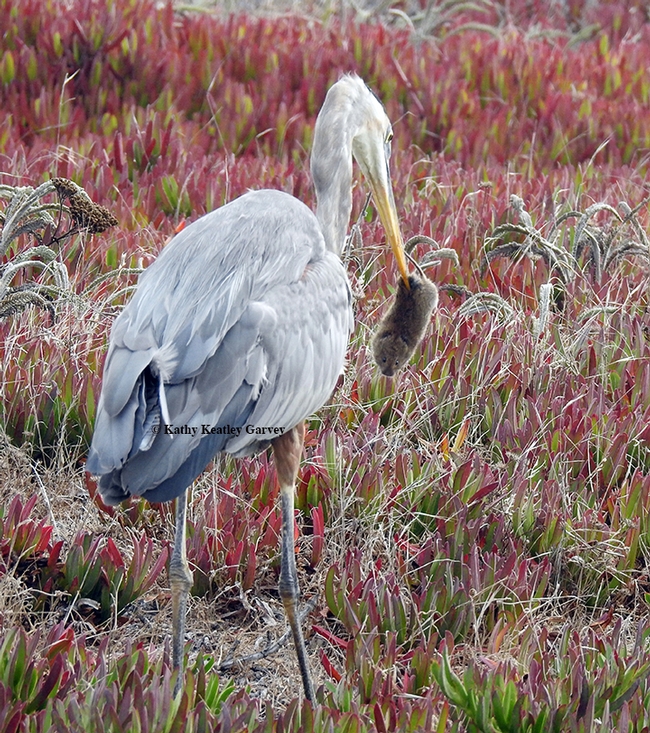
A great blue heron engages in a little pest management: it catches a rodent, a meadow vole, at Bodega Bay. (Photo by Kathy Keatley Garvey)
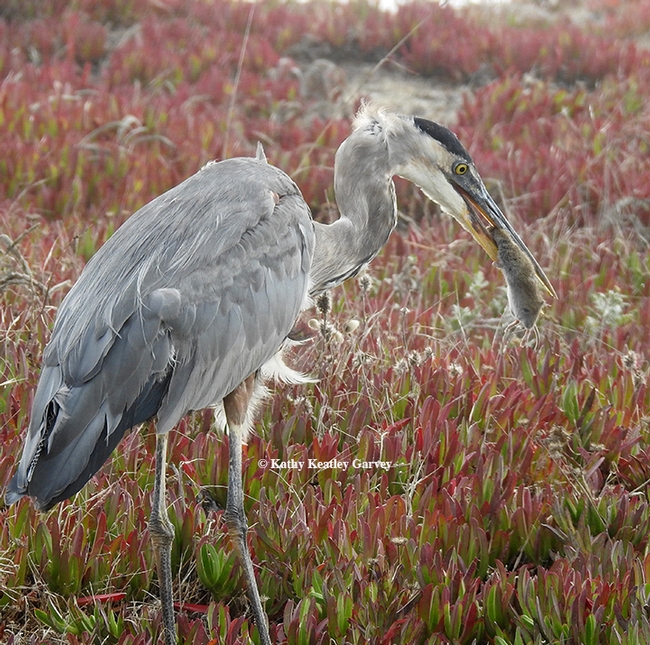
The great blue heron gets its prey, a meadow vole, in position before swallowing it whole. (Photo by Kathy Keatley Garvey)